Report on the Outcome of ALAB NG DULA: DIWA NG BAYAN
Accentuating Filipino Core Values
Introduction
The ALAB NG DULA: DIWA NG BAYAN initiative successfully highlighted the richness of Filipino core values through theatrical performances, engaging narratives, and interactive workshops. The event emphasized patriotism, unity, and cultural identity, aligning with fostering national pride and social consciousness. This report details the outcomes of the event and its relevance to the broader national education framework.
Key Outcomes of ALAB NG DULA
Promotion of Filipino Core Values
Through dramatization and storytelling, the event reinforced values such as malasakit (compassion), Bayanihan (community spirit), pakikipagkapwa-tao (respect for others), and pagkamakabayan (patriotism).
Audiences, especially students and educators, gained a deeper appreciation for cultural heritage and moral values essential for nation-building.
Post-event surveys indicated an increase in participants’ awareness and appreciation of Filipino core values.
Educational and Cultural Impact
The event successfully integrated performing arts as an educational tool, making learning more interactive and engaging.
The initiative supported the Department of Education's (DepEd), National Commission for Culture and the Arts , FTYC objective of enhancing values formation among the youth.
Teachers and students were provided with resources and methodologies to incorporate cultural appreciation into the standard curriculum.
Teacher training sessions were conducted to ensure the sustainability of the cultural education approach.
Community Engagement and Inclusivity
The event encouraged participation from diverse communities, including indigenous groups and marginalized sectors, ensuring that the program was inclusive.
It provided a platform for dialogue on cultural preservation and its role in fostering national unity.
Collaborations with local governments were initiated to sustain similar cultural initiatives.
Collaboration with National Agencies and Institutions
The event strengthened ties between educational institutions, the Department of Education, National Commission for Culture and the Arts and other youth and cultural organizations.
It aligned to enhance education through holistic and inclusive learning experiences.
Recommendation: Memorandums of Agreement (MOAs) be signed with key stakeholders to integrate arts-based education into local curriculums.
Alab ng Dula Diwa ng Bayan: Accentuating Filipino Core Values highlights the need for expertise in education development, policy-making, and implementation.
The outcomes of ALAB NG DULA align with these objectives in the following ways:
Integrating Cultural Education in Learning Systems
The event demonstrated how culture-based education can address the learning crisis in the Philippines, particularly in making lessons more engaging and values-driven.
Teachers and national education consultants can adopt similar approaches to enhance curriculum development with local cultural elements.
Studies show that values-based education improves student engagement and retention, supporting advocacy for holistic learning.
Fostering Inclusive and Holistic Learning
The focus on Filipino core values contributes to developing a resilient and inclusive education system that promotes social awareness and moral integrity.
This aligns with DepEd, NCCA, and FTYC goal of ensuring that education caters to the most vulnerable populations.
Recommendation: To integrate theater arts into formal education settings to measure its long-term impact on student learning outcomes.
Enhancing Teacher Training and Capacity Building
ALAB NG DULA provided training and workshops for educators on using performing arts as a pedagogical tool.
Teachers and consultant consultants can incorporate these methodologies into broader education reform strategies.
Scaling up professional development programs for teachers to effectively implement culture-based learning approaches is recommended.
Recommendations
Policy Integration
DepEd and national consultants should explore ways to integrate theatrical storytelling and cultural narratives into the standard curriculum.
A framework for culture-based education should be developed, ensuring that value formation remains a priority in learning institutions.
Institutional support should be secured to sustain long-term arts education programs nationwide.
Capacity Building for Educators
Training programs should be designed to equip teachers with innovative strategies in integrating arts and values education.
Future collaborations between UNICEF, DepEd, NCCA and cultural institutions should focus on long-term capacity-building initiatives.
Regular assessment and feedback mechanisms should be established to ensure continuous improvement in arts-based pedagogy.
Sustained Community Engagement
ALAB NG DULA should be expanded to reach more schools and communities, with a focus on rural and underserved areas.
A monitoring and evaluation system should be established to assess the long-term impact of values-based education on student learning and development.
A dedicated fund should support ongoing cultural education initiatives and community-based artistic projects.
Conclusion
The ALAB NG DULA: DIWA NG BAYAN initiative successfully reinforced Filipino core values through the performing arts, contributing to national education goals. Its outcomes strongly align with the NCCA, FTYC, and DepED objectives, particularly in promoting inclusive, value-laden, and culturally rooted education. By integrating these learnings into policy and practice, the Philippine education system can move toward a more holistic and impactful approach to learning.
To ensure long-term sustainability, stakeholders must continue investing in culture-based education, expanding its reach, and institutionalizing its methodologies. Through collective efforts, this initiative can reshape the educational landscape and foster a generation of socially responsible and culturally grounded citizens.
3. PROJECT BACKGROUND:
The project ALAB NG DULA is a very helpful tool for it provides production grants to organizations and networks in the Philippines to stage new works that contribute to the development of Filipino Theater and Performances.
The productions focus on themes such as Filipino values, sustainable development goals, gender and development issues, and the 125th anniversary of Philippine Independence. It also encourages collaborations with other performing groups and artists are encouraged, allowing for co-writing scripts, incorporating diverse performers, and utilizing various artistic elements to create impactful theater experiences.
The main goal is to support the growth of Filipino theater while addressing important social and cultural topics. This particular grant is very timely since there are so many Youth Organizations already here in Mindanao and this project will enable the Federation of Tribal Youth Council (FTYC) to reconnect to various Youth Organizations just like the NCCA grant in 2018 the IP-Moro Youth Summit.
Federation of Tribal Youth Council will encourage them to select artistic, creative, collaborative, disciplined, versatile, expressive, empathic. resilient, culturally aware, adaptable, confident, with sense of timing, and attention detailed performers to come up with the needed output of this project. 4.
PROJECT DESCRIPTION:
1. Proposed Procedure of engagement: Invitational performances a. FTYC will connect to:
1. Youth Organizations from various Municipalities
2. Youth Organization in various schools that can come up with theater play depicting the following Filipino Core Values
a. They all have the liberty to select and even add Filipino core values not on the list that they like to portray.
b. They will perform in Robinson’s Mall where an expected audience of 500 shall be mobilized.
1. Family-oriented: Filipinos place great importance on their families and maintain strong family ties, often making decisions with their family's best interests in mind.
2. Respect for elders: Elders are highly esteemed in Filipino culture, and younger generations are taught to show deference and respect to their elders.
3. Hospitality (Pagkamapagmahal sa panauhin): Filipinos are known for their warm and hospitable nature, welcoming guests with open arms and making them feel at home.
4. Bayanihan (Community Spirit): This value refers to the spirit of cooperation and mutual help within the community, especially during times of need or celebration.
5. Utang na Loob (Debt of Gratitude): Filipinos value reciprocity and a sense of indebtedness to those who have helped them in the past.
6. Hiya (Sense of Shame): Hiya is the feeling of shame or embarrassment brought on by actions that may lead to the loss of face or dignity, and it influences social behavior.
7. Pakikisama (Sense of Harmony): Filipinos value getting along with others and being a part of a harmonious group or community.
8. Pakikipagkapwa (Sense of Shared Identity): This value emphasizes a sense of shared humanity and treating others as equals, fostering empathy and compassion.
9. Modesty and Humility: Being modest and humble is highly regarded in Filipino culture, and boasting or showing off is generally discouraged.
10. Resilience (Pagtitiis): Filipinos are known for their ability to endure hardships and challenges with patience and fortitude.
11. Flexibility (Pagiging malikhain): Filipinos are resourceful and adaptable, finding creative solutions to various situations.
12. Joyfulness and Sense of Humor (Pagiging Masayahin): Filipinos often find humor and joy in the midst of difficult circumstances.
13. Faith and Spirituality (Pananampalataya): Religion and spirituality play a significant role in the lives of many Filipinos, providing a sense of guidance and meaning.
14. Love for Country (Pagmamahal sa Bayan): Filipinos have a strong sense of nationalism and love for their country, expressed through national pride and patriotism.
15. Gratitude (Pasasalamat): Filipinos are appreciative of blessings and express gratitude to others who have been kind and helpful to them.
16. Balikatan (Cooperation): Filipinos believe in working together and cooperating as a team to achieve common goals and objectives.
17. Kagandahang Loob (Compassion): This value emphasizes showing kindness and compassion to others, especially to those in need.
18. Grit and Determination (Tapang at Tiyaga): Filipinos are known for their resilience and perseverance in the face of challenges and adversity.
19. Camaraderie (Pakikipagkaibigan): Building strong friendships and fostering a sense of camaraderie is highly valued in Filipino culture.
20. Love for Education (Pagmamahal sa Edukasyon): Education is highly prioritized in Filipino culture, and seen as a key to success and upward mobility.
21. Responsibility and Accountability (Kagalingan sa Sarili): Filipinos are taught to be responsible for their actions and decisions, as well as to be accountable for their mistakes.
22. Integrity (Katapatan): Honesty and moral uprightness are highly valued traits, and acting with integrity is expected in personal and professional dealings.
23. Grassroots Empowerment (Pagtulong sa mga Nasa Laylayan): Filipinos often engage in initiatives that uplift the less fortunate and marginalized members of society.
24. Unity and Solidarity (Pagkakaisa): Filipinos believe in the strength that comes from unity and working together for the common good.
25. Resourcefulness (Maparaan): Filipinos are resourceful problem-solvers, finding creative ways to overcome challenges and make the most of limited resources.
a. Certificate of Participation shall be given to the Youth Organization and to individuals b. Special Award shall be given like:
a. Best Play - The most prestigious award given to the overall best theatrical play of the season.
b. Best Original Script - Acknowledges the playwright for an outstanding original script or playwriting. c. Best Choreography - Honors the choreographer for outstanding dance sequences and movement in the play.
d. Best Stage Management - Recognizes the stage management team for their organizational skills and efficiency in running the production smoothly.
e. Outstanding Contribution to Theater Education - Recognizes an individual or organization that has made significant contributions to theater education and nurturing young talent.
f. Best Costume Design - Recognizes the artistic and creative costume design that complements the play's setting and characters.
g. Best Original Score or Music - Acknowledges the composer or musical team for creating original music or score that elevates the play.
h. Best Actor - Recognizes the outstanding performance by an actor in a significant role.
i. Best Actress - Similar to the previous award, but for female actors in prominent roles.
Date and venue of project implementation - June - October 2024
a) Project purposes. Inviting youth organizations to compete in depicting Filipino core values through a theater play can serve various meaningful purposes:
1. Empowerment: Participation in the competition empowers youth by giving them a platform to showcase their talents, stories, and unique perspectives.
2. Cultural Exchange: It fosters cultural exchange and understanding between indigenous communities and the wider Filipino society, bridging gaps and promoting inclusivity.
3. Promotion of Filipino Core Values: The competition reinforces the importance of Filipino core values, providing an opportunity for indigenous youth to creatively interpret and express them.
4. Interpretation of Values through Diversity: Different indigenous communities may have distinct interpretations of core values, enriching the understanding of these principles through diverse perspectives.
5. Social Awareness: The theater play can raise awareness among the audience about the challenges faced by indigenous communities and the importance of cultural appreciation.
6. Youth Engagement and Leadership: It encourages youth engagement in artistic endeavors, fostering leadership skills and teamwork among indigenous youth.
7. Promotion of Social Cohesion: By inviting indigenous youth organizations, the competition promotes social cohesion and unity among various cultural groups within the Philippines.
8. Capacity Building: Indigenous youth gain valuable experience in theater production, enhancing their artistic and technical skills.
9. Inspiration for Future Generations: By showcasing indigenous youth's talent and creativity, the competition inspires future generations to embrace their cultural identity and contribute to the preservation of Filipino core values.
b) Results/Outputs:
1. Original Theater Productions: The project should result in a collection of original theater productions created by various indigenous youth organizations, each showcasing their unique interpretation of Filipino core values.
2. Diverse Cultural Representations: The outputs should reflect a diverse range of cultural representations, offering insights into the traditions, beliefs, and practices of different indigenous communities.
3. Increased Cultural Awareness: The theater plays are expected to raise cultural awareness among the participants and the audience, fostering appreciation and understanding of indigenous cultures.
4. Artistic Talents Showcased: The project should provide a platform for indigenous youth to showcase their artistic talents, including acting, scriptwriting, directing, and other creative aspects of theater production.
5. Community Engagement: Through the project, there should be increased community engagement, with indigenous youth actively involving their communities in the creation and staging of the theater plays.
6. Strengthened Sense of Identity: Indigenous youth participants should develop a stronger sense of cultural identity and pride in their heritage as they explore and express their traditions through theater. 7. Public Performances: The theater plays should be publicly performed and accessible to a broader audience, encouraging dialogue and appreciation for indigenous art and culture.
8. Promotion of Filipino Core Values: The theater plays should effectively convey Filipino core values, fostering discussions about their significance and application in contemporary society.
9. Positive Impact on Participants: The project should have a positive impact on the participants' personal development, self-confidence, and sense of achievement.
10. Long-Term Cultural Impact: As the project celebrates and preserves indigenous culture and Filipino core values, it should leave a lasting impact on the participants.
c) Inputs/ Activities:
1. Inform Youth Organizations in Municipalities, in schools to participate in the said theater play.
2. Preparation proper of the various participants.
3. Visit to see their performances.
4.Main Performance at the Robinson’s Mall
d) Objectively Verifiable Indicators:
To determine the success of the project involving indigenous youth organizations performing to depict Filipino core values through theater plays, the following measures and indicators can be utilized:
1. Attendance and Audience Feedback: Measure the number of attendees at each theater play and gather qualitative feedback from the audience about their understanding and appreciation of Filipino core values portrayed in the performances.
2. Participant Feedback: Collect qualitative feedback from participating indigenous youth organizations regarding their experience, skills development, and overall satisfaction with the project.
3. Cultural Exchange Events Participation: Measure the participation rate of indigenous youth in cultural exchange events and assess the level of engagement and interaction between different communities.
4. Social Media Reach and Engagement: Track social media metrics (likes, shares, comments) related to the project's promotion and public awareness efforts, indicating the project's reach and impact on a broader audience.
5. Quality of Theater Productions: Employ a standardized evaluation rubric to assess the quality, creativity, and relevance of each theater play, as judged by a panel of experts and stakeholders.
6. Number of Collaborations and Partnerships: Measure the number of collaborations and partnerships established with local organizations, government agencies, or private institutions, indicating the project's support and recognition within the community.
7. Media Coverage and Publicity: Assess the amount and quality of media coverage (e.g., press articles, TV/radio features) about the project and its impact on raising awareness of indigenous culture and Filipino core values.
8. Documentation and Archiving Completeness: Evaluate the thoroughness and accuracy of project documentation, ensuring that all essential aspects are recorded and preserved for future reference.
9. Youth Leadership and Empowerment: Use self-assessment surveys or qualitative interviews to gauge the level of leadership and empowerment experienced by participating Indigenous youth throughout the project.
10. Long-Term Impact: Conduct follow-up assessments at a later date to measure the long-term impact of the project on participating Indigenous youth, their communities, and the broader society. It is essential to collect data and feedback regularly, ensuring the indicators are relevant and accurate to assess the project's progress and success. These measures can be analyzed throughout the project's implementation, providing valuable insights for adjustments and improvements, and ultimately determining the overall effectiveness and achievements of the initiative.



















































































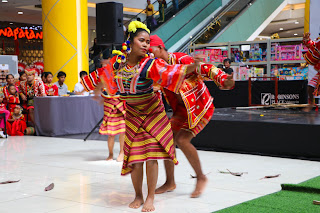


















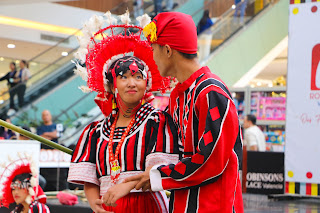






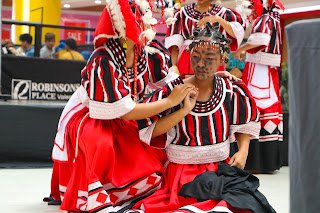












































































































.jpg)














































































































































































































































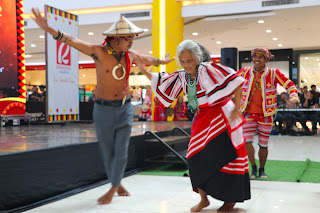
























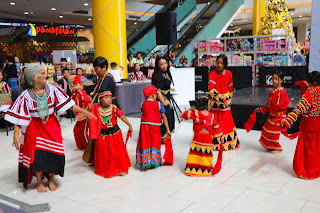




































































































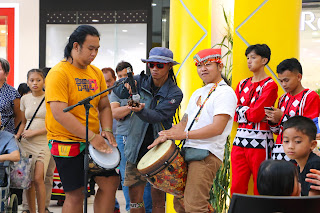





















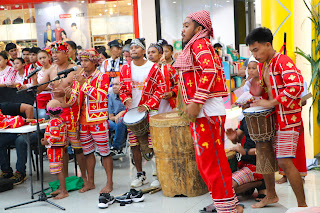





















































































































No comments:
Post a Comment